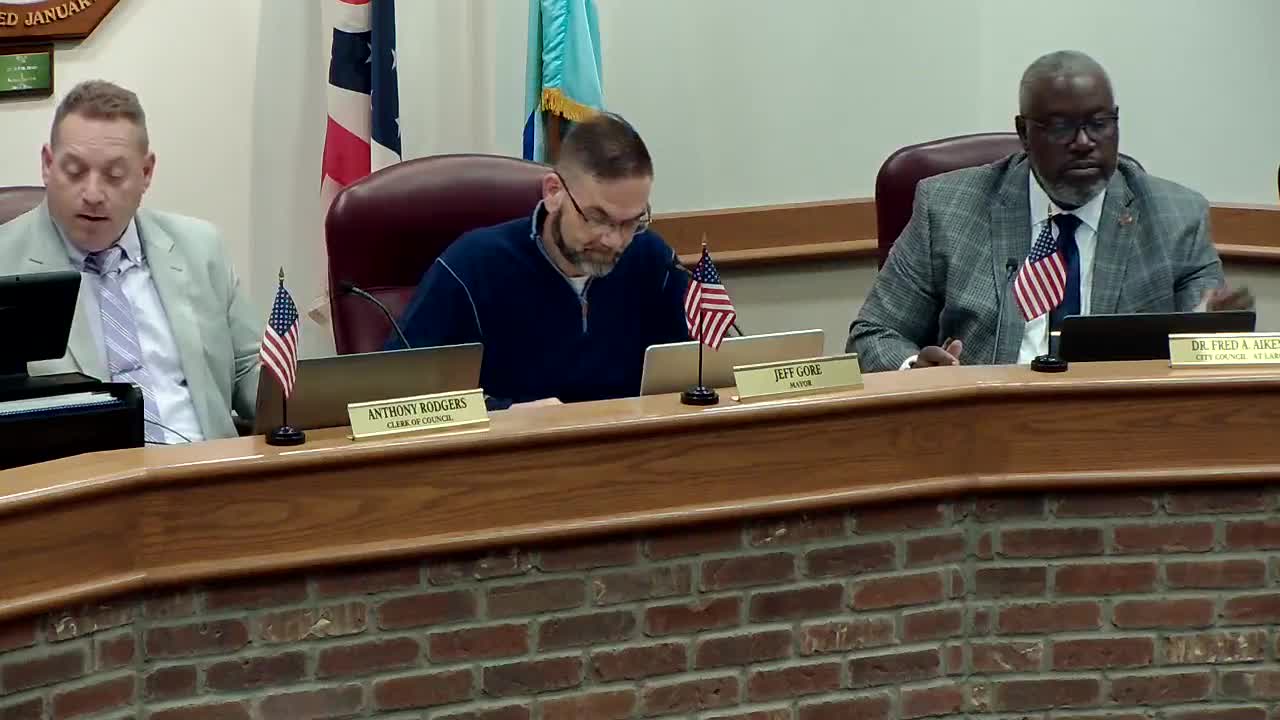Resident provides speed data near Kittredge/Strathaven; council and staff promise follow-up
October 13, 2025 | Huber Heights, Montgomery County, Ohio
This article was created by AI summarizing key points discussed. AI makes mistakes, so for full details and context, please refer to the video of the full meeting. Please report any errors so we can fix them. Report an error »

Robert Lundy, a Huber Heights resident, addressed the council during general comments on Oct. 13 with compiled observations and video documenting repeated speeding near Kittredge Avenue at the Strathaven/4740 Kittredge area.
Lundy said the radar-speed indicator frequently displayed a double-flashing line — which he interpreted as speeds above 44 mph — and that the digital readout had not worked since Oct. 3. He supplied time-stamped notes and video excerpts showing multiple instances of high-speed passes during morning and afternoon periods and flagged bus pickup times near 06:59 a.m. for concern because children are in the area.
City officials acknowledged the problem and described immediate and near-term steps. John (city manager) said staff will forward Lundy’s videos to the police chief and attempt to identify license plates from footage where possible. He noted officers cannot issue a citation after the fact unless a driver is stopped at the time of the violation, but staff can follow up with property owners when video evidence identifies specific vehicles. The city’s traffic-enforcement unit has been active, officials said, and officers have recently issued more citations in targeted locations.
Officials also discussed nonenforcement measures: adding or relocating digital speed-feedback signs, targeted enforcement during peak hours, and evaluating whether a lower posted speed or supplementary warning signage (for example, a 25-mph school-zone-style designation or "children at play" signage in the immediate block) would be appropriate. Council members and staff asked the sign shop and traffic team to study options and report back.
Lundy said he provided a multi-page log of dates and times where the speed sensor registered double-flashing alerts and noted the presence of young children in nearby yards. He credited Officer Perez for an immediate response on one occasion but said the pattern returns when enforcement is not present.
No formal council action was taken at the meeting. Staff committed to review the submitted recordings, forward videos to police for investigative follow-up, and return to council with recommendations on signage, enforcement timing and any targeted engineering changes needed to improve safety in the neighborhood.
Lundy said the radar-speed indicator frequently displayed a double-flashing line — which he interpreted as speeds above 44 mph — and that the digital readout had not worked since Oct. 3. He supplied time-stamped notes and video excerpts showing multiple instances of high-speed passes during morning and afternoon periods and flagged bus pickup times near 06:59 a.m. for concern because children are in the area.
City officials acknowledged the problem and described immediate and near-term steps. John (city manager) said staff will forward Lundy’s videos to the police chief and attempt to identify license plates from footage where possible. He noted officers cannot issue a citation after the fact unless a driver is stopped at the time of the violation, but staff can follow up with property owners when video evidence identifies specific vehicles. The city’s traffic-enforcement unit has been active, officials said, and officers have recently issued more citations in targeted locations.
Officials also discussed nonenforcement measures: adding or relocating digital speed-feedback signs, targeted enforcement during peak hours, and evaluating whether a lower posted speed or supplementary warning signage (for example, a 25-mph school-zone-style designation or "children at play" signage in the immediate block) would be appropriate. Council members and staff asked the sign shop and traffic team to study options and report back.
Lundy said he provided a multi-page log of dates and times where the speed sensor registered double-flashing alerts and noted the presence of young children in nearby yards. He credited Officer Perez for an immediate response on one occasion but said the pattern returns when enforcement is not present.
No formal council action was taken at the meeting. Staff committed to review the submitted recordings, forward videos to police for investigative follow-up, and return to council with recommendations on signage, enforcement timing and any targeted engineering changes needed to improve safety in the neighborhood.
View full meeting
This article is based on a recent meeting—watch the full video and explore the complete transcript for deeper insights into the discussion.
View full meeting
